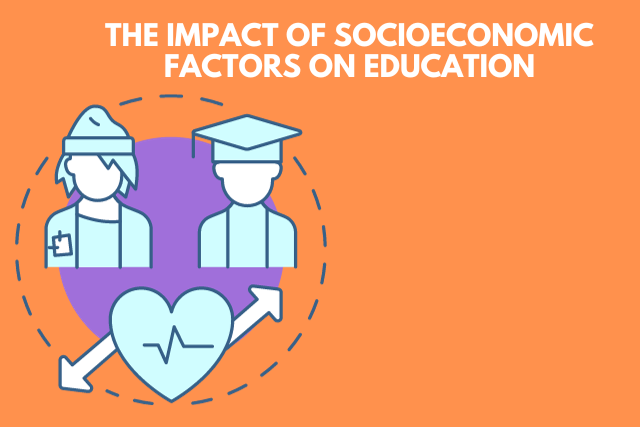Education is often hailed as the great equalizer, a pathway to opportunities and a brighter future. However, the reality is far from being equitable. The impact of socioeconomic factors on education is undeniable and has profound implications for individuals and society as a whole. In this blog post, we will delve into the ways in which socioeconomic factors shape educational outcomes and explore potential solutions to bridge the gap.
- Unequal Access to Educational Resources
Socioeconomic status significantly affects a student’s access to educational resources. Children from affluent families typically have access to high-quality schools, well-trained teachers, and a rich array of extracurricular activities. In contrast, students from low-income households often attend underfunded schools with fewer resources and less experienced educators.
- Disparities in Academic Achievement
Socioeconomic factors can lead to significant disparities in academic achievement. Research consistently shows that students from lower-income backgrounds tend to perform below their wealthier peers on standardized tests. These disparities in achievement can persist throughout a student’s educational journey, affecting their long-term opportunities.
- Barriers to Higher Education
The cost of higher education is a major barrier for students from low-income families. As college tuition continues to rise, many capable students are deterred from pursuing higher education due to financial constraints. This limits their access to career opportunities that often require a college degree.
- Educational Attainment and Income
Education and income are intertwined in a cyclical relationship. Individuals with higher levels of education tend to earn more over their lifetime, which, in turn, can benefit their children’s educational opportunities. Conversely, those with lower levels of education may face limited earning potential, perpetuating the cycle of poverty.
- Health and Well-being
Socioeconomic factors also influence a student’s health and well-being, which can impact their educational outcomes. Children from lower-income families may face increased stress, lack of access to adequate healthcare, and unstable housing situations, all of which can hinder their ability to succeed academically.
- Opportunity Gaps and Social Mobility
The impact of socioeconomic factors on education contributes to the opportunity gap – the unequal distribution of opportunities and resources among students. This gap not only affects individual students but also has broader societal implications. It can limit social mobility, perpetuate income inequality, and reinforce socioeconomic disparities.
- Addressing Socioeconomic Disparities in Education
While the impact of socioeconomic factors on education is profound, it’s important to recognize that change is possible. Several strategies can help address these disparities:
- Equitable School Funding: Reforming school funding systems to ensure that all schools, regardless of their location, receive adequate resources.
- Early Childhood Education: Investing in high-quality early childhood education programs to provide a strong educational foundation for all children.
- Teacher Training and Support: Providing professional development and support for educators working in underprivileged communities to ensure quality teaching.
- Scholarships and Financial Aid: Expanding scholarship and financial aid opportunities to make higher education more accessible to low-income students.
- Community and Parental Involvement: Promoting community engagement and parental involvement in education to create a supportive learning environment.
Conclusion
The impact of socioeconomic factors on education is a complex and multifaceted issue. However, by acknowledging these disparities and implementing targeted interventions, we can work towards a more equitable education system. Education should be a tool for breaking the cycle of poverty and providing opportunities for all, regardless of socioeconomic background. It is through these efforts that we can truly harness the transformative power of education.

